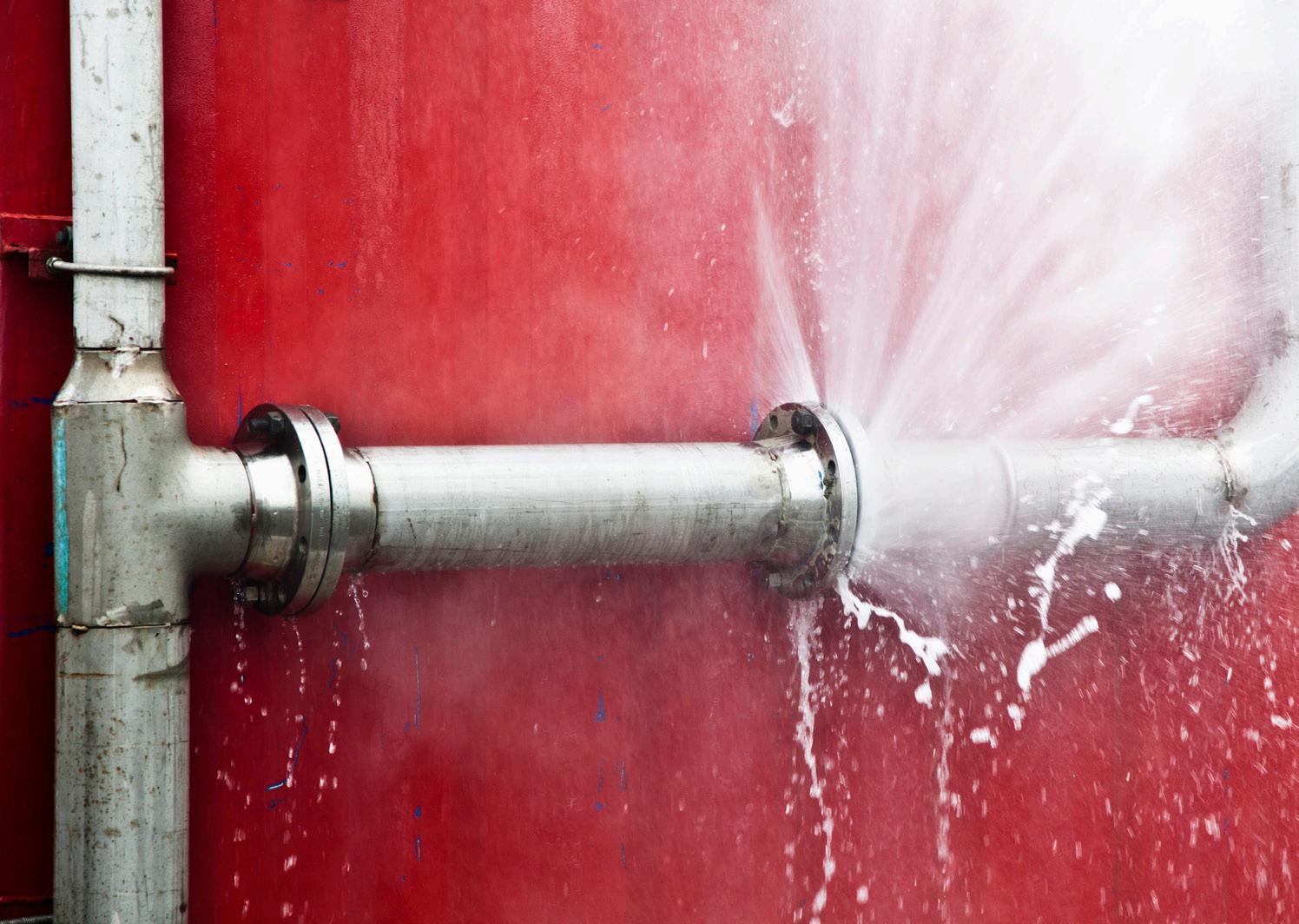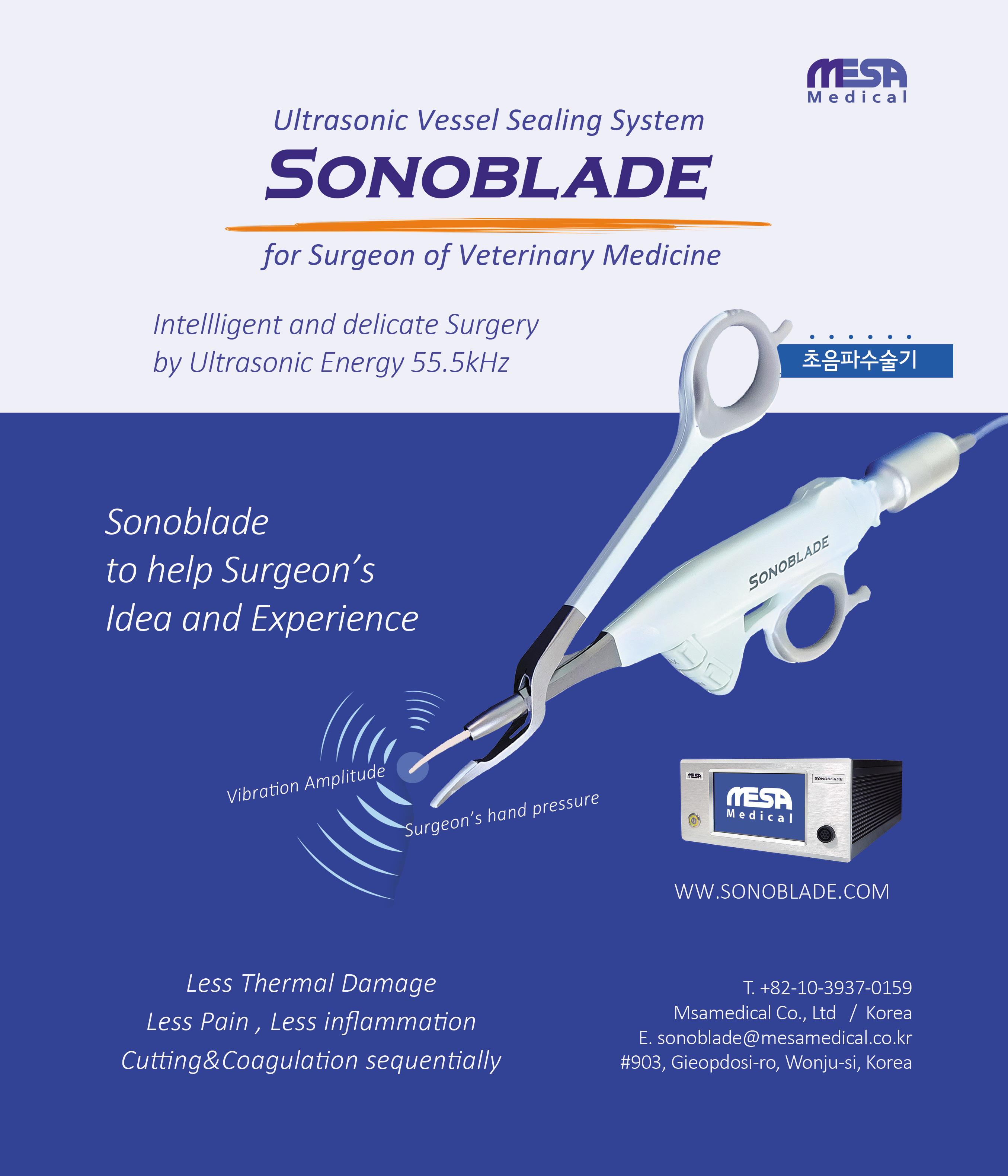
3 minute read
Safeguarding Your Veterinary Practice from Water Damage: Mitigation Strategies for Success
By Bret Martin, PE, CSP, CFPS, CHFM, CHE, CLSS-HC, Assistant Vice President, Property Risk Control, CNA Insurance
Water can destroy medical equipment, computer/phone systems, records, and supplies and may cause significant damage to the walls and floors of your clinic. According to CNA Insurance claims data for veterinary clinics from 2017–2022, 21% of all claims have been related to water damage.
Here are basic steps to minimize the risk of water damage:
Assess your clinic’s water intrusion sources and potential impact
It is critical to understand how water might enter your clinic and the damages that could occur. There are three major sources of water damage for buildings:
1. Building infrastructure that supplies, removes, or uses water (such as HVAC equipment with condensate drains, humidifiers, hot water heaters, washers, and icemakers)
2. Exterior walls, doors, windows, and roof
3. Water from outside sources or an unintended inside source. Managing and responding to surface water, back up of sewers and drains, and flood hazards is a key risk control element for a property owner
Consider having an accredited professional assess your building for risks of an infrastructure failure where systems/equipment are beyond their useful life or have been damaged in some manner. This assessment should include plumbing, sewage, HVAC, roofs, and sprinkler protection systems.
Additionally, it is important to consider the potential impact from a water release in your clinic. Identify critical equipment (e.g. servers, computers, x-ray equipment) that may be impacted and understand the time and cost to repair/replace water-damaged items. This will enable you to develop equipment recovery plans with the information needed (e.g. vendor/ contractor information, cost, and lead time estimates) to quickly restart your clinic’s operations.
Prepare your clinic’s water risk mitigation solution Preparation is essential to any successful water damage mitigation plan. Key preparatory elements include:
• Maintaining current maps and drawings identifying all water sources and control valves
• Updated minimum construction standards for new facilities
• Frequent training for response personnel
• Established guidelines for minimum flood mitigation equipment/ inventories and site locations
• Established system agreements with environmental services
Preparation should also include steps to reduce water damage to the clinic using flow restriction and remote monitoring devices, including:
• Using water detection devices to alert the presence of water
• Implementing flow control or flow restriction devices on water supply lines
• Defined response processes for water alert events
• Considering use of automatic shutoff devices
An increasingly popular element of many water damage mitigation plans is the use of new Internet of Things (IoT) water sensing technologies, both passive and active. Passive systems send alerts to your phone/email when water intrusion occurs, and are typically for smaller appliances, sinks, water heaters, condensate overflow pans, and other water sources. Active systems are more effective at reducing the amount of water intrusion itself, incorporating devices that detect water and/or monitor water flow rates that automatically shut off valves during leak events. In addition, selfclosing “flow control” or “flow restriction” devices that automatically shut off the flow can be placed on supply lines for toilet connections, sinks, dishwashers, icemakers, coffee makers, etc. A wellcrafted water damage mitigation plan will incorporate this new technology and allow for rapid detection, flow control, and response to water events.
Isolate and remove water impacting the clinic
Quickly detecting the presence of water and isolating its source can significantly reduce damage. Following water isolation and containment, it is important to begin the drying process using fans, dehumidifiers, and other methods to reduce moisture levels. It is also essential to remove any standing water as soon as possible to prevent mold growth, which can begin within 24 hours. Immediately following a water damage event, a thorough inspection—including checking for signs of structural damage, testing for mold and other contaminants, and assessing any potential health risks— should be performed. Containing and drying out the water and thoroughly inspecting the affected areas can help save time and money, and minimize health risks for the occupants and animals.
CNA offers risk control solutions that can help businesses manage property-related exposures and minimize business interruptions. CNA has a website dedicated to Water Damage Mitigation (https://www.cna.com/web/guest/ cna/risk-control/prepwise/water-damage) that includes reference documents for Water Damage Preparation, Water Damage Incident Response, and Water Damage Technology Solutions. There are additional links for Business Resiliency Planning, Winter Weather Preparation, and Hurricane Preparation. All of these resources can help prepare your veterinary clinic for water damage events.
The budget-friendly solution for veterinary care is friendlier than ever.

With veterinarians, we share in a mission so relentless, it adds an entirely new dimension to the world of preventative care and therapeutics. More than passion. More than dedication. More than expertise. Because animal health isn’t just our profession. It’s our calling. And together, we are more than medicine.

$59 if you apply to enroll by 07/31/2023.
Learn more at carecredit.com/mycustomlink.
What could be friendlier than giving your clients a contactless, all-in-one digital way to learn about financing, see if they prequalify (no impact to their credit bureau score), apply and pay.* All on their own. That’s how simple payment can be when you accept the CareCredit credit card. ©2023
*Subject to credit approval.










